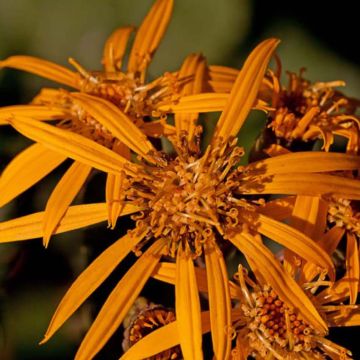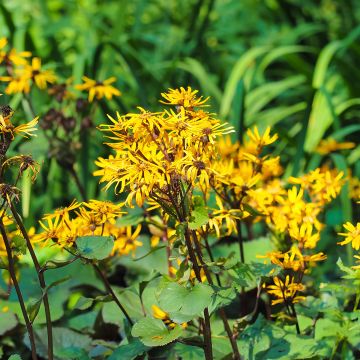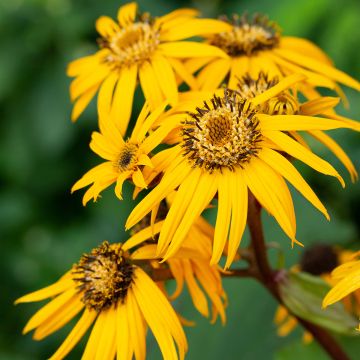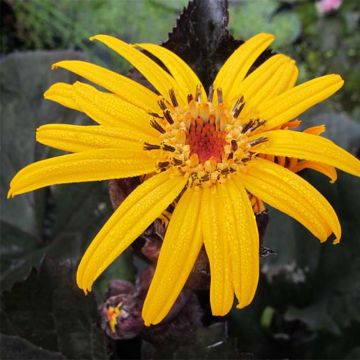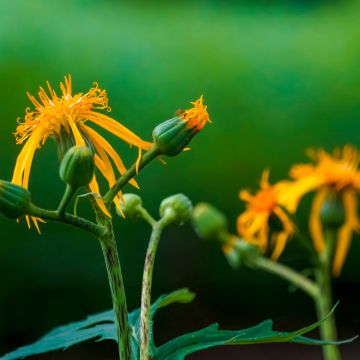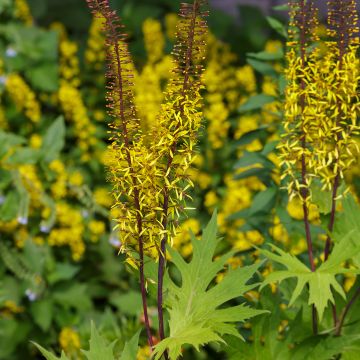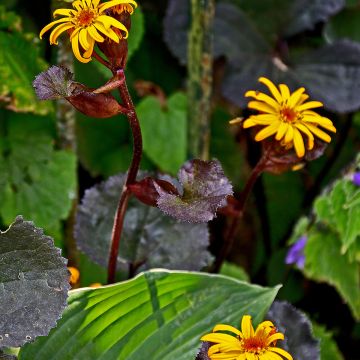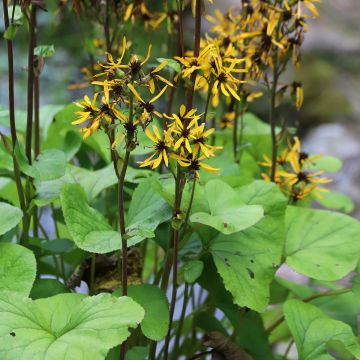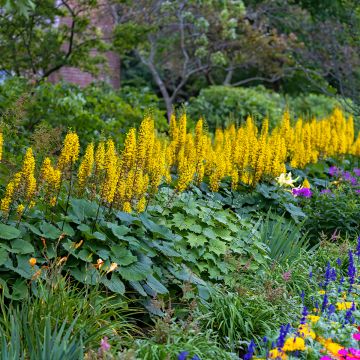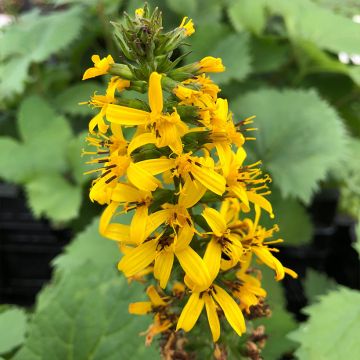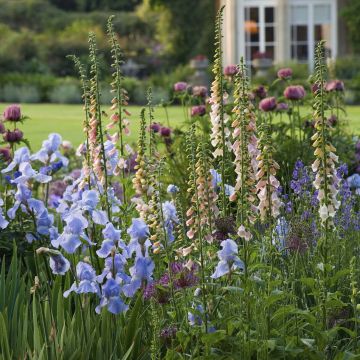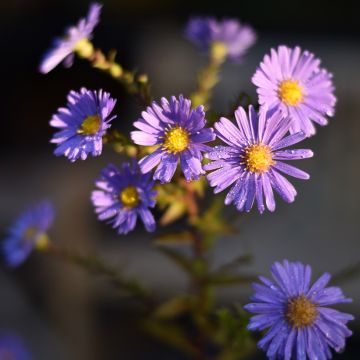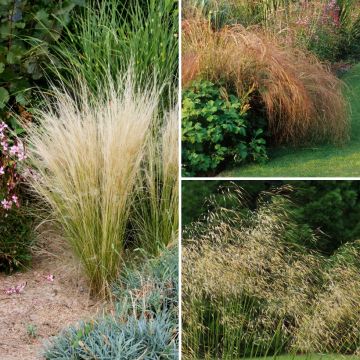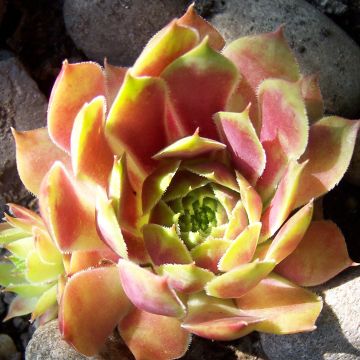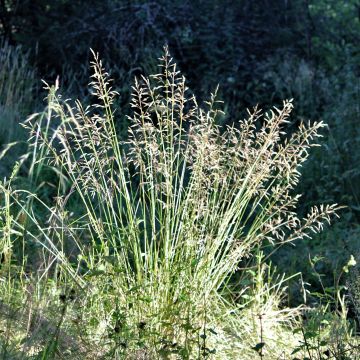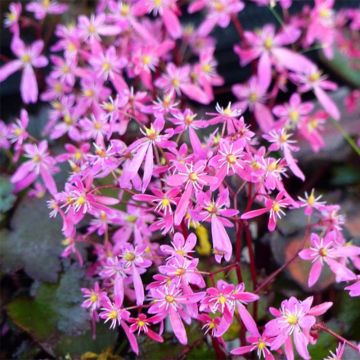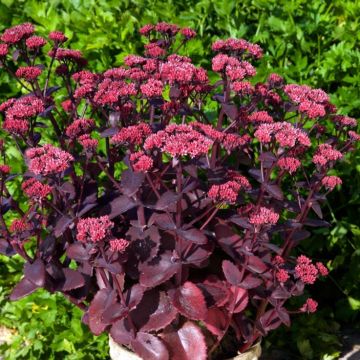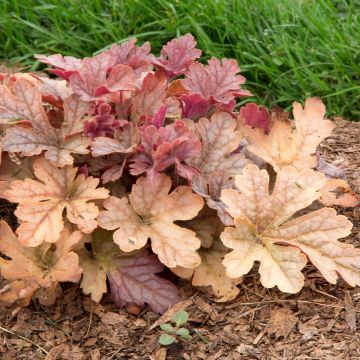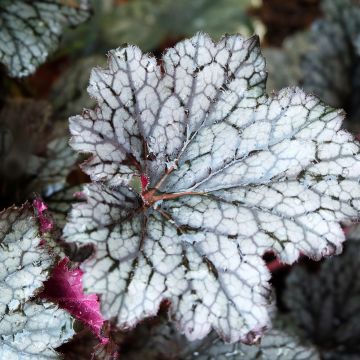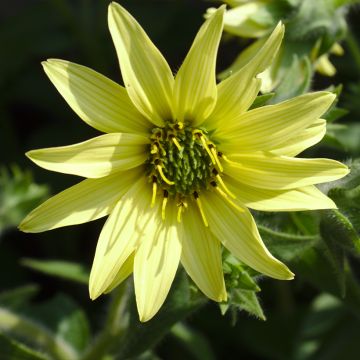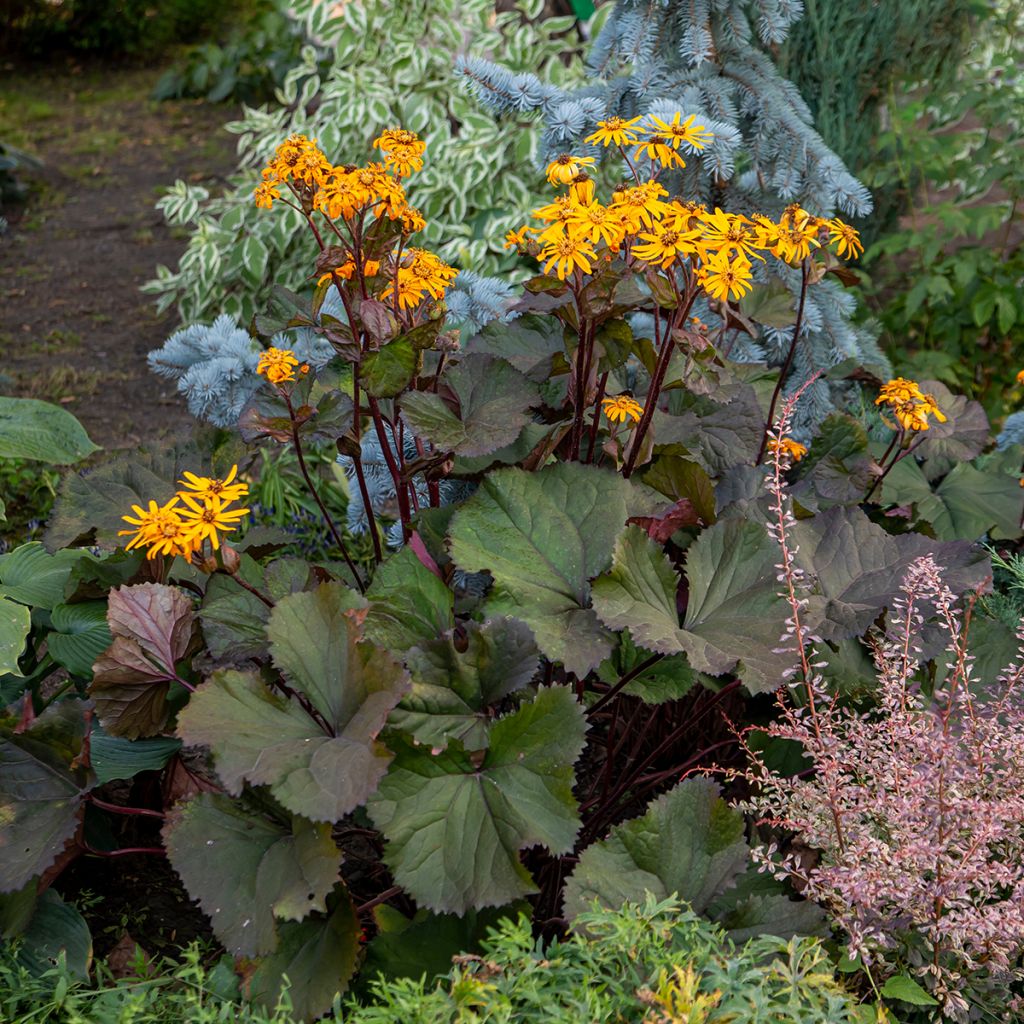

Ligularia dentata - Leopard Plant
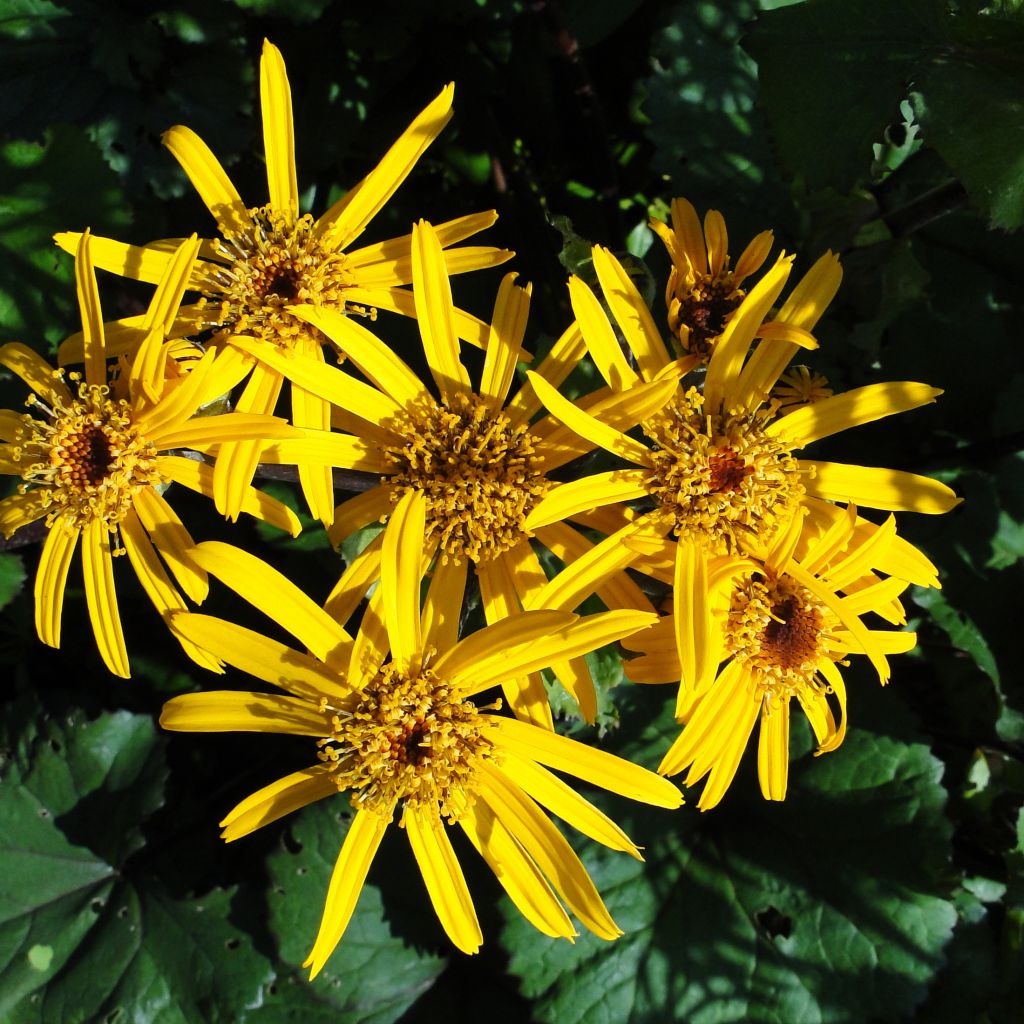

Ligularia dentata - Leopard Plant
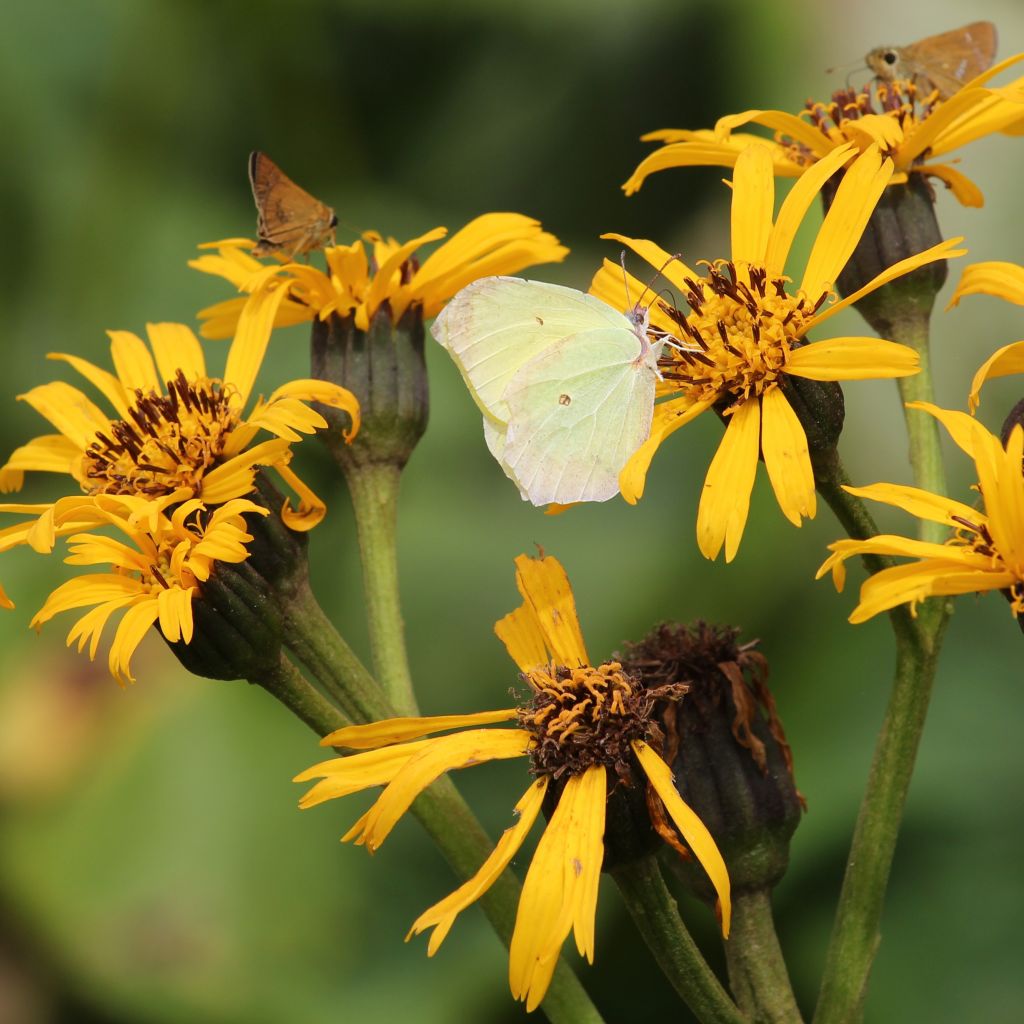

Ligularia dentata - Leopard Plant
Ligularia dentata - Leopard Plant
Ligularia dentata
Leopard Plant
Very good recovery for this young plant planted as soon as it was received, lots of new leaves already sprouted... unfortunately immediately attacked by the slimy ones! but that's the life of the garden, isn't it?
Lydia, 06/05/2023
This item cannot be shipped to the selected country
Delivery charge from €5.90
More information
Schedule delivery date,
and select date in basket
This plant carries a 12 months recovery warranty
More information
We guarantee the quality of our plants for a full growing cycle, and will replace at our expense any plant that fails to recover under normal climatic and planting conditions.
From €5.90 for pickup delivery and €6.90 for home delivery
Express home delivery from €8.90.
Does this plant fit my garden?
Set up your Plantfit profile →
Description
The Ligularia dentata is an impressive and majestic ornamental plant, with a giant-like appearance. Its spectacular decorative foliage is dark green to deep bronze, and in summer, it is dominated by long spikes of yellow-orange flowers with a brown centre, grouped in pyramidal clusters. This robust perennial plant thrives in damp, shady, and wet conditions, and it adds structure and beauty to the shaded and moist areas of the garden!
Ligularia dentata, also known as Ligularia clivorum and Ligularia dentate, is a large perennial native to China and Japan, belonging to the Asteraceae family. Forming an imposing mass, this vigorous, compact, and bushy species reaches a height of 1 to 1.50 meters (3 to 5 feet) with a spread of 1 meter (3 feet). Its abundant glossy leaves are 15 to 30 cm (6 to 12in) long, and are dentate and rounded with deep fan-shaped veins. The basal leaves are heart-shaped, leathery, ranging from dark green to deep bronze, almost mahogany on the reverse, and their long petioles are red. From July to October, large corymbs, 2 to 10 cm (1 to 4in) in diameter, composed of numerous yellow-orange flowers with a brown centre, bloom on tall branching stems tinged with purple. The delicately fragrant flowers attract many pollinating insects.
With great longevity, this vigorous and very cold-resistant Ligularia prefers wet soils, even heavy soil including clay, or marshy soils, as well as semi-shade, or even complete shade. Forming an imposing, dense, and compact mass, measuring 80 cm (32in) to 1 m (3ft) in diameter, its magnificent foliage will make an impression in the garden, in shaded and wet areas. This magnificent ornamental plant will be particularly suitable for the water's edge (pond, ditch, basin, stream...). It will also be ideal for flower beds or mixed borders, even tolerating a relatively sunny position, provided that the soil remains moist and wet, a necessary condition for the development of its foliage. Slow to establish, it takes two to three years for this Ligularia to reach its adult size. It will be the perfect companion for many perennial shade plants such as Campanula lactiflora, Hosta, Rodgersia, Kirengeshoma, Astilbe, Thalictrum, Ligularia stenocephala, Veronikastrum sibiricum, Euphorbia palustris, or Iris chrysographes. It will also work wonders when planted in a large pot, as long as there is constant moisture in its substrate.
The etymology of the word Ligularia comes from the Latin word "ligula," meaning strap or strip, referring to the ligules or corollas that make up the flowers. Dentata refers to the dentate leaves of this Ligularia.
Report an error about the product description
Ligularia dentata - Leopard Plant in pictures
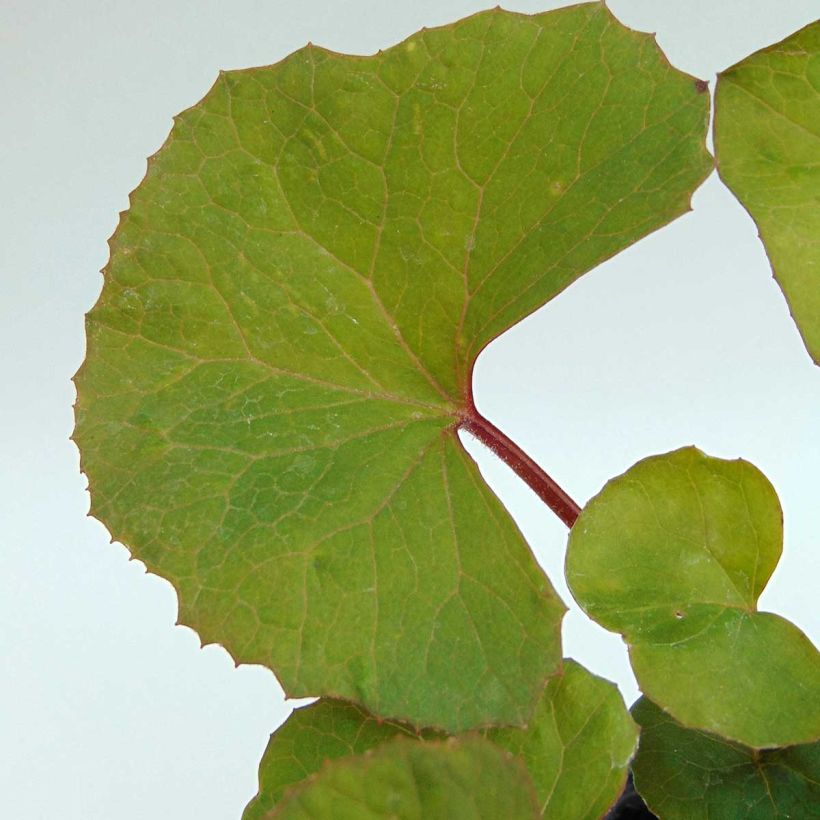

Flowering
Foliage
Plant habit
Botanical data
Ligularia
dentata
Astéracées
Leopard Plant
China
Other Ligularia
Planting and care
Ligularia dentata is a vigorous and resistant plant, extremely hardy, capable of withstanding temperatures well below -20°C (-4°F). Having significant water requirements, its substrate should remain constantly moist, but not waterlogged. It should be planted in spring or autumn, in a humus-rich, loose, deep and moist soil, or in a heavy soil, even clay or marshy soil. It prefers semi-shaded or complete shade, but can tolerate sun as long as the soil remains damp and moist. Direct sunlight and drought can cause the foliage to wilt and the flowers to fade. This is a sign that generous watering is needed. It is recommended to mulch the base of the plant with organic compost to maintain moisture during summer. It is also advisable to protect it from strong winds that can bend its flower stems and damage its foliage. Staking the flower stems can be done to support them during flowering. A very easy plant to care for, maintenance only involves removing damaged leaves and cutting back faded stems. In spring, adding compost will be beneficial for abundant flowering. Tidy the clump at the end of winter. As it establishes slowly, it is advisable to leave this Ligularia in place for a long time. Propagation can be done by dividing clumps every 3 or 4 years, in spring or autumn. It is resistant to any diseases, but its young foliage is a feast for snails and slugs. The young leaves may be subject to a gastropod invasion.
Planting period
Intended location
Care
-
, onOrder confirmed
Reply from on Promesse de fleurs
Summer flowering perennials
Haven't found what you were looking for?
Hardiness is the lowest winter temperature a plant can endure without suffering serious damage or even dying. However, hardiness is affected by location (a sheltered area, such as a patio), protection (winter cover) and soil type (hardiness is improved by well-drained soil).

Photo Sharing Terms & Conditions
In order to encourage gardeners to interact and share their experiences, Promesse de fleurs offers various media enabling content to be uploaded onto its Site - in particular via the ‘Photo sharing’ module.
The User agrees to refrain from:
- Posting any content that is illegal, prejudicial, insulting, racist, inciteful to hatred, revisionist, contrary to public decency, that infringes on privacy or on the privacy rights of third parties, in particular the publicity rights of persons and goods, intellectual property rights, or the right to privacy.
- Submitting content on behalf of a third party;
- Impersonate the identity of a third party and/or publish any personal information about a third party;
In general, the User undertakes to refrain from any unethical behaviour.
All Content (in particular text, comments, files, images, photos, videos, creative works, etc.), which may be subject to property or intellectual property rights, image or other private rights, shall remain the property of the User, subject to the limited rights granted by the terms of the licence granted by Promesse de fleurs as stated below. Users are at liberty to publish or not to publish such Content on the Site, notably via the ‘Photo Sharing’ facility, and accept that this Content shall be made public and freely accessible, notably on the Internet.
Users further acknowledge, undertake to have ,and guarantee that they hold all necessary rights and permissions to publish such material on the Site, in particular with regard to the legislation in force pertaining to any privacy, property, intellectual property, image, or contractual rights, or rights of any other nature. By publishing such Content on the Site, Users acknowledge accepting full liability as publishers of the Content within the meaning of the law, and grant Promesse de fleurs, free of charge, an inclusive, worldwide licence for the said Content for the entire duration of its publication, including all reproduction, representation, up/downloading, displaying, performing, transmission, and storage rights.
Users also grant permission for their name to be linked to the Content and accept that this link may not always be made available.
By engaging in posting material, Users consent to their Content becoming automatically accessible on the Internet, in particular on other sites and/or blogs and/or web pages of the Promesse de fleurs site, including in particular social pages and the Promesse de fleurs catalogue.
Users may secure the removal of entrusted content free of charge by issuing a simple request via our contact form.
The flowering period indicated on our website applies to countries and regions located in USDA zone 8 (France, the United Kingdom, Ireland, the Netherlands, etc.)
It will vary according to where you live:
- In zones 9 to 10 (Italy, Spain, Greece, etc.), flowering will occur about 2 to 4 weeks earlier.
- In zones 6 to 7 (Germany, Poland, Slovenia, and lower mountainous regions), flowering will be delayed by 2 to 3 weeks.
- In zone 5 (Central Europe, Scandinavia), blooming will be delayed by 3 to 5 weeks.
In temperate climates, pruning of spring-flowering shrubs (forsythia, spireas, etc.) should be done just after flowering.
Pruning of summer-flowering shrubs (Indian Lilac, Perovskia, etc.) can be done in winter or spring.
In cold regions as well as with frost-sensitive plants, avoid pruning too early when severe frosts may still occur.
The planting period indicated on our website applies to countries and regions located in USDA zone 8 (France, United Kingdom, Ireland, Netherlands).
It will vary according to where you live:
- In Mediterranean zones (Marseille, Madrid, Milan, etc.), autumn and winter are the best planting periods.
- In continental zones (Strasbourg, Munich, Vienna, etc.), delay planting by 2 to 3 weeks in spring and bring it forward by 2 to 4 weeks in autumn.
- In mountainous regions (the Alps, Pyrenees, Carpathians, etc.), it is best to plant in late spring (May-June) or late summer (August-September).
The harvesting period indicated on our website applies to countries and regions in USDA zone 8 (France, England, Ireland, the Netherlands).
In colder areas (Scandinavia, Poland, Austria...) fruit and vegetable harvests are likely to be delayed by 3-4 weeks.
In warmer areas (Italy, Spain, Greece, etc.), harvesting will probably take place earlier, depending on weather conditions.
The sowing periods indicated on our website apply to countries and regions within USDA Zone 8 (France, UK, Ireland, Netherlands).
In colder areas (Scandinavia, Poland, Austria...), delay any outdoor sowing by 3-4 weeks, or sow under glass.
In warmer climes (Italy, Spain, Greece, etc.), bring outdoor sowing forward by a few weeks.

































